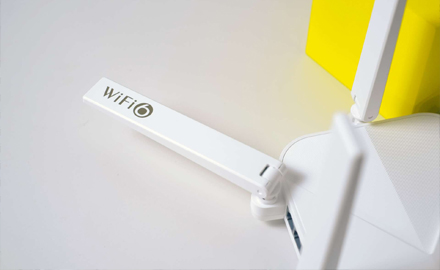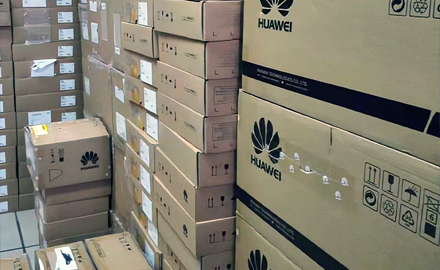Jeff Heynen, an analyst at market research company Dell'Oro Group, recently published a column analyzing the adoption and development of XGS-PON technology in the North American market. He said that over the past two years, North America has been the fastest growing region for PON equipment used to provide residential fiber broadband services. Between 2019 and 2022, XGS-PON OLT port shipments in North America increased by 2231%.

Driven by public and private investment, North America has been the fastest growing region for PON equipment used to deliver residential fiber broadband services over the past two years. Total service provider spending on PON equipment in the region has grown from $774 million in 2019 to an expected $1.9 billion in 2022. Service providers of all sizes are continuing to build on their original goal of bringing fiber to every home, as they seek to outpace the cable operators that have dominated the region's broadband market for years while also overbuilding legacy DSL networks. . In fact, in many cases, the main reason for the high focus on optical fiber is that in 2020 and 2021, DSL users will turn to Cable services in large numbers as users' bandwidth needs can easily exceed the bandwidth that ADSL2+ and VDSL technology can provide.
The focus on speed and long-term competitiveness has led to another unique development in the North American market: the rapid emergence of XGS-PON as the main technology used in the construction of new FTTH networks. Between 2019 and 2022, XGS-PON OLT port shipments in North America increased by 2231%, jumping from 32,000 in 2019 to 748,000 in 2022 (expected data). The 2022 shipment numbers would have been even higher were it not for ongoing supply chain issues leading to massive supplier backlogs.
While Tier-1 carriers like AT&T and Frontier Communications account for the majority of these shipments, it's important to note that carriers of all types and sizes are deploying XGS-PON, including electric cooperatives, rural carriers and Tier-3 telecom operators and Cable operators. In fact, after many informal conversations with these smaller, community-focused operators, it's hard to find a company that hasn't deployed XGS-PON yet.
Clearly, service providers are focused on maximizing their investments and ensuring the long-term success of their large and expensive fiber construction projects. It’s no surprise, then, that XGS-PON has quickly become the technology of choice for the vast majority of North American fiber service providers. In fact, it has already reached the point where XGS-PON OLT port shipments exceed GPON OLT port shipments. This happened in the third quarter of 2021 and has not changed since then.
The situation is slightly different for ONTs, with XGS-PON still lagging behind GPON in quarterly shipments. This is largely due to the embedded foundation of GPON networks, as well as supply chain constraints on the availability of new, cost-reducing XGS equipment.
Service providers clearly believe that the multi-gigabit symmetric services that XGS-PON can deliver are now their bargaining chip. In many cases, symmetrical 1Gbps service (upstream and downstream) is considered the lowest service tier, with symmetrical 2Gbps and 5Gbps quickly becoming mid- and advanced service tiers. Bell Canada already offers a symmetric 8Gbps service tier, and Google Fiber has announced plans to add 5Gbps and 8Gbps service tiers in 2023. As North America's massive fiber expansion transitions into a speed war, more service providers will launch ultra-high-speed services like this.
The focus on speed and the need to stay ahead of competitors may lead to accelerated adoption of new PON technologies in North America, including 25Gbps and 100Gbps PON. This seems crazy considering how quickly service providers have moved from 10Gbps of shared user capacity per OLT port. But if providers are already rolling out 5Gbps and 8Gbps tier services, they will quickly exhaust XGS-PON capacity, even if oversubscribed. It's likely that charges for these high-end services will be relatively modest in the short term, as most users stick to the 500Mbps to 1Gbps service tiers. This leaves ample time for XGS-PON to move forward until at least 2030, which is in line with the typical life cycle of PON technology.
But speed is ultimately only one aspect of a successful broadband service. Whether adding new tiers of residential services based on new parameters such as latency, jitter and uplink speeds, or extending networks focused on residential services to enterprise and wholesale mobile backhaul services, operators must find a way to make their fiber networks and service differentiation.
Therefore, the ability to configure and deliver new services that are specifically designed to address how customers use bandwidth will be a key component of successful broadband service providers. Whether it’s home security, network security, parental controls or bandwidth prioritization of apps or traffic, successful service providers must complement the higher speeds they offer with apps and helpful services that allow customers to get the most out of their subscriptions .
With the current massive fiber buildout in North America and reliance on XGS-PON and the ability to deliver 10Gbps speeds, the focus for service providers in the second half of this decade will be squarely on how to maximize their investments and how to consolidate Users' relationship with services and support will go far beyond what is currently available.


 What is the Role of EDFA in FTTH?
What is the Role of EDFA in FTTH?
 The Difference Between AX1800 ONU and AX3000 ONU
The Difference Between AX1800 ONU and AX3000 ONU
 How are Huawei OLTs Classified?
How are Huawei OLTs Classified?
 The Future Trend of Optical Line Terminals (OLTs)
The Future Trend of Optical Line Terminals (OLTs)